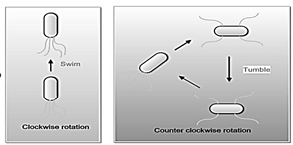Bacterial Foraging Optimization Technique for Optimal Reorganization of Radial Distribution Network with Inclusion of DG and DSTATCOM
Keywords:
DG, BFOT, DSTATCOM, RDN, AFSOT, ACOTAbstract
Existing transmission infrastructure is unable to handle such a high load demand due to the exponentially expanding demand for electrical power. As a result, either there is a need to make investments to increase the transmission system's capacity or use distributed generation to locally meet consumer demand. Many experts are now focusing on the effect that the growing installation and integration of various small-scale power production technologies into the electrical grid may have on the performance of the grid. The voltage profile is improved and network losses are decreased when the placement and size are ideal. The objective is to choose bus stops where there will be little loss and acceptable potential. Methodology is currently very helpful to the system-planning engineer in dealing with the increase in Distributed Generation (DG) penetration because it can examine the influence on particular system features of DG allocation. In order to improve power quality and optimize DG allocation, a metaheuristic algorithm namely Bacterial Foraging Optimization Technique (BFOT) is developed in this study. A DSTATCOM is added to the system for reactive power compensation in order to increase performance. This aids in loss minimization and voltage quality enhancement. The proposed method is tested on a typical 14-bus & 33-bus radial distribution network (RDN). The simulation is run using Matlab code, and the suggested method's output is compared with Artificial Fish Swarm Optimization Technique (AFSOT) and Ant Colony Optimization Technique (ACOT) and validated against their outputs.
Downloads
References
Mohamed Imran A, Kowsalya M. Optimal size and siting of multiple distributed generators in distribution system using bacteria foraging Optimization. Swarm Evolutionary Computation 2014; 15:58–65.
Hung Duong Quoc, Mithulananthan N, Bansal RC. Analytical strategies for renewable distributed generation integration consideration energy loss minimization. Appl Energy 2013:75–85.
Surender Reddy Salkuti , “Optimal location and sizing of DG and D-STATCOM in distribution networks”, Indonesian Journal of Electrical Engineering and Computer Science, Vol. 16, No. 3, pp. 1107~1114, December 2019.
M. Moazzami, G.B. Gharehpetian, H. Shahinzadeh, S.H. Hosseinian, "Optimal locating and sizing of DG and D-STATCOM using Modified Shuffled Frog Leaping Algorithm", 2nd Conference on Swarm Intelligence and Evolutionary Computation, Kerman, 2017, pp. 54-59.
A.R. Gupta, "Effect of optimal allocation of multiple DG and D-STATCOM in radial distribution system for minimizing losses and THD", 7th International Symposium on Embedded Computing and System Design, Durgapur, 2017, pp. 1-5.
A.K. Tagore, A.R. Gupta, "Impact of DG and D-STATCOM allocation in radial distribution system for reducing harmonics", 8th International Conference on Computing, Communication and Networking Technologies, Delhi, 2017, pp. 1-5.
Kashem MA, Le DT, Negnevitsky M, Ledwitch G. Distributed generation for minimization of power loss in distribution systems. In: IEEE power engineering society general meeting; 2006.
Hung Duong Quoc, Mithulananthan N. Multiple distributed generator placement in primary distribution networks for loss reduction. IEEE Trans Ind Electron 2013;60(4):1700–8.
Gozel T, Hocaoglu MH. An analytical method for the sizing and siting of distribution generators in radial systems. Int J Electric Power System Res 2009; 79:912–8.
M. Dorigo, G. DiCaro and L. M. Gambardella, “Ant algorithms for discrete optimization”, Artificial Life Journal, vol. 5, pages 137-172, 1999.
Janga Reddy M, Nagesh Kumar.D, “Evolutionary algorithms, swarm intelligence methods, and their applications in water resources engineering: a state-of-the-art review”. H2OpenJ 3 135-188, 2020.
B. Weqar, M.T. Khan, A.S. Siddiqui, "Optimal Placement of Distributed Generation and D-STATCOM in Radial Distribution Network", Smart science, vol. 6, no. 2, pp. 125-133, 2018.
Li Xiaolei, Feng Shaohui, Qian Jixin, and Lu Fei,“Parameter tuning method of robust PID controller based on artificial fish school algorithm,” Information and Control,Vol.33, No.1, pp.112-115,Feb.2004.
R. Sirjani, A.R. Jordehi, "Optimal placement and sizing of distribution static compensator (D-STATCOM) in electric distribution networks: A review", Renewable and Sustainable Energy Reviews, vol. 77, pp. 688-694, Sept. 2017.
Mohamed Imran A, Kowsalya M. A new power system reconfiguration scheme for power loss minimization and voltage profile enhancement using Fireworks Algorithm. Int J Electric Power Energy Syst 2014:312–22.
Liu Yaonian, Li Yinghong, Zhang Bingbing, and Li Chunliang, “Artificial fish-swarm algorithm for optimal power flow problems,” Advanced Technology of Electrical

Downloads
Published
How to Cite
Issue
Section
License

This work is licensed under a Creative Commons Attribution-ShareAlike 4.0 International License.
All papers should be submitted electronically. All submitted manuscripts must be original work that is not under submission at another journal or under consideration for publication in another form, such as a monograph or chapter of a book. Authors of submitted papers are obligated not to submit their paper for publication elsewhere until an editorial decision is rendered on their submission. Further, authors of accepted papers are prohibited from publishing the results in other publications that appear before the paper is published in the Journal unless they receive approval for doing so from the Editor-In-Chief.
IJISAE open access articles are licensed under a Creative Commons Attribution-ShareAlike 4.0 International License. This license lets the audience to give appropriate credit, provide a link to the license, and indicate if changes were made and if they remix, transform, or build upon the material, they must distribute contributions under the same license as the original.





